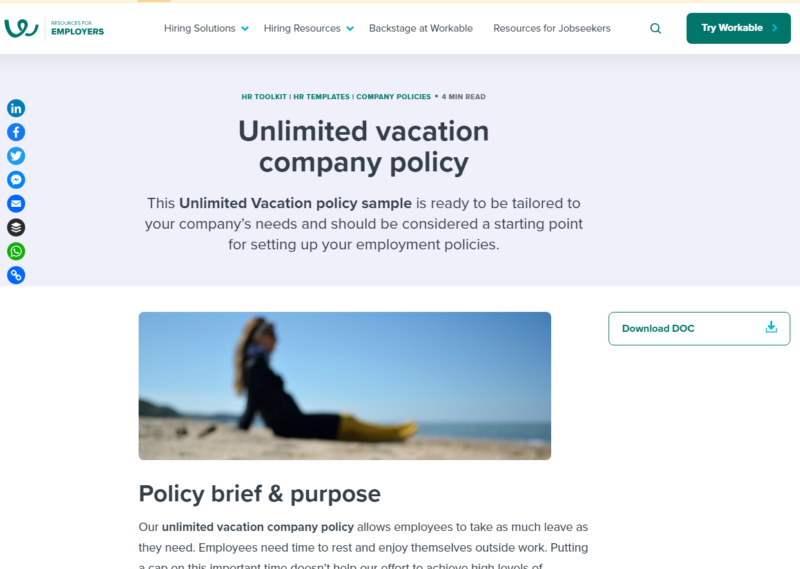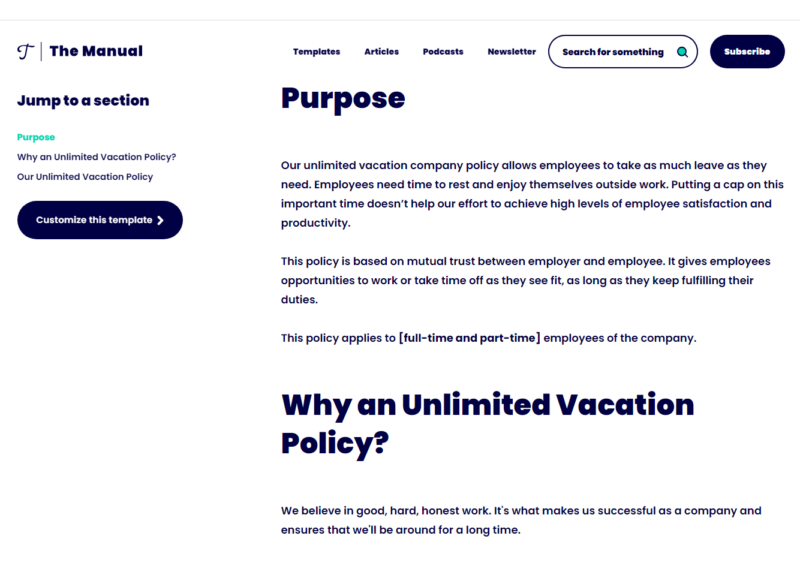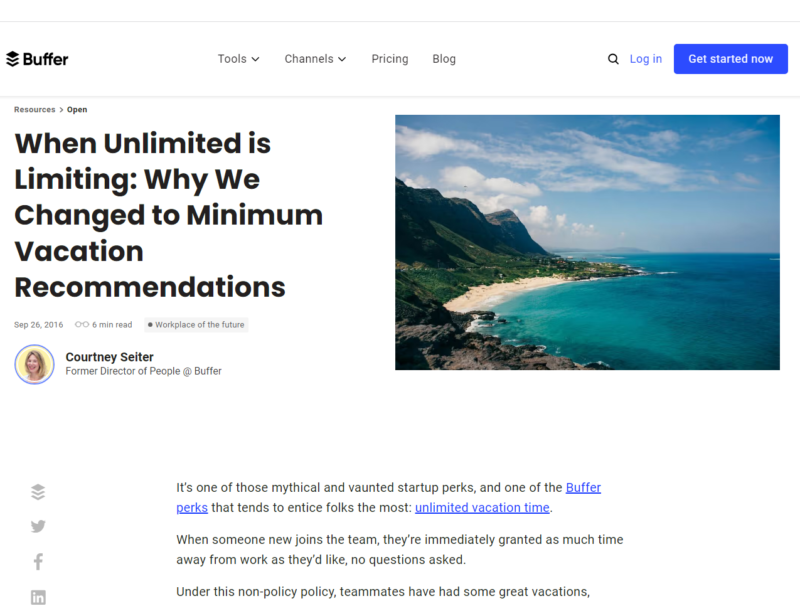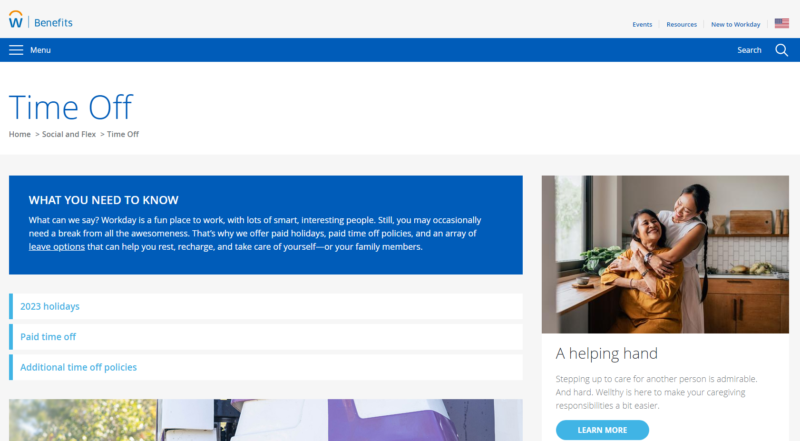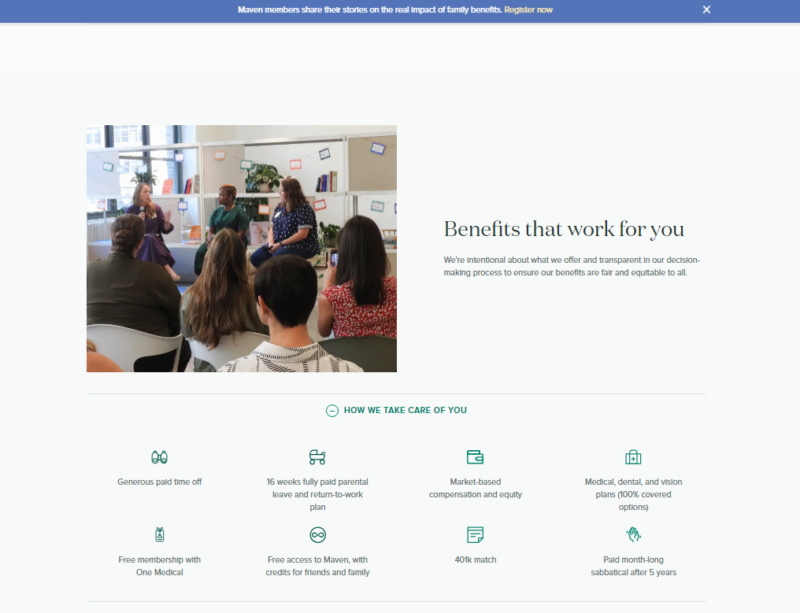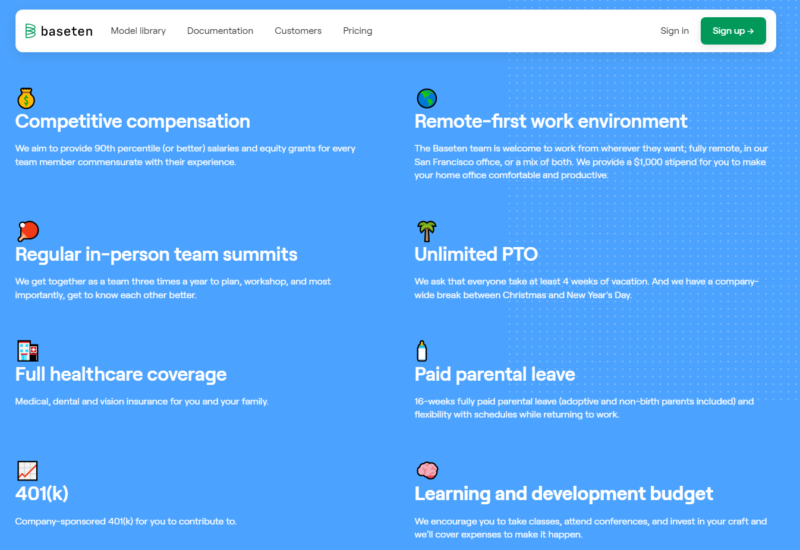Unlimited PTO Policy Examples & Templates
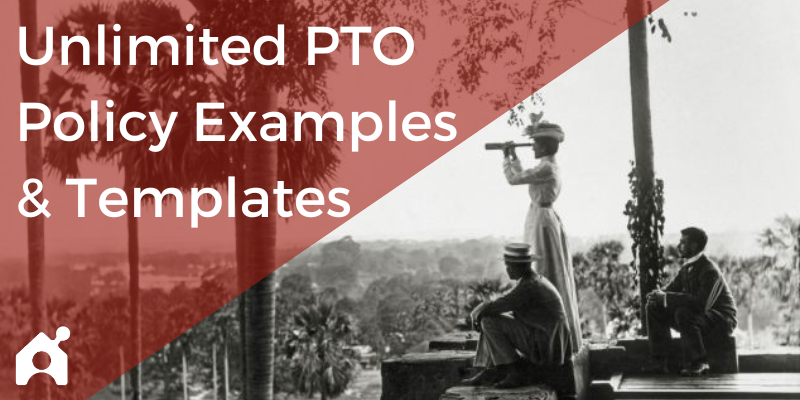
Many companies have adopted unlimited PTO (paid time off) policies in recent years and the trend is growing, as more organizations consider switching to an unlimited PTO policy to attract talent.
But as I noted in the previous chapter, there are some drawbacks to unlimited PTO policies which are not obvious at first glance. One issue that I touched on is the need to carefully draft unlimited PTO policy to avoid conflicts with the federal FMLA (Family Medical Leave Act) and state laws governing medical leave.
Because unlimited PTO is such a drastic departure from traditional PTO policy, it’s helpful to look at unlimited PTO policy examples for guidance—and to avoid potential pitfalls. For these reasons, in this chapter I’ve included an unlimited PTO policy template and linked to several others. I’ve also provided unlimited PTO/vacation policy examples from several companies, to show how unlimited PTO policies can work.
Unlimited PTO Policy Template
I pulled together the following unlimited PTO policy template as an example of what a good unlimited PTO policy might look like. I’ve also linked to several others; the following are just a few of the unlimited PTO policy templates available from authoritative online sources.
Unlimited Vacation Policy Template For [COMPANY]Purpose: Our unlimited vacation company policy allows employees to take as much leave as they need. Employees need time to attend to personal and family affairs and rest and recharge outside work. Limiting this time does not advance our goals of achieving high employee engagement and productivity. This policy is based on our trust in our employees’ ability to fulfill their duties while managing their own schedule. Scope: This policy applies to all salaried employees of the company. Policy: All eligible employees can elect to take as much PTO as they need or want. However, all employees are expected and encouraged to take at least ____ number of days of PTO each year, to ensure that they have some minimum amount of time off away from their work duties. The minimum PTO days accrue if they are not used, and employees will be compensated for any unused minimum PTO days when they leave the company. For employees’ well-being, however, the company strongly encourages all employees to take at least the minimum number of PTO days established by this policy each year. The company will track vacation time for all employees to ensure that:
This policy is separate from legally established leave like parental and medical leave. Employees should take off the amount of time established by law for those purposes. Vacation PTO is separate. Procedures: Employees are expected to:
Supervisors may reject vacation requests if:
Leave requests cannot be rejected for any of the following reasons:
Employees and supervisors should communicate openly, use common sense and follow company guidelines when requesting or approving vacation leave so the policy works for everyone. This policy is subject to annual review and revision. Disclaimer: This template provides general guidelines and should be used as a reference. It is not a legal document. Employers are advised to consult with a legal expert when drafting PTO policy, to ensure that the policy takes into account all relevant local, state and federal laws. |
See Also: What Is Unlimited PTO & How Does It Work?
Unlimited PTO Policy Sample by SHRM
SHRM (Society for Human Resources Management), one of the best, unbiased authorities for all things HR-related, has an unlimited PTO policy sample available as a free download. Of note, the policy reserves the company’s right to track leave for business purposes and stipulates that leave is subject to approval.
SHRM also offers some helpful guidance on the issue of potential conflicts between unlimited PTO policies and FMLA. Kimberly Ross, an attorney with FordHarrison in Chicago, was interviewed by SHRM and noted that “There is likely a significant difference between unlimited paid time off and unlimited vacation.” With an unlimited vacation policy, she said, a company can more easily control whether it is obligated to pay an employee during an FMLA or other type of short-term absence, and whether it has to pay for an employee taking sick leave, short of an FMLA leave.
The takeaway here is that it may be a good idea to implement an unlimited vacation policy as opposed to an unlimited PTO policy—and to be sure to call it “unlimited vacation” rather than “unlimited PTO.”
Unlimited Vacation Policy Example by Workable
Workable took the advice offered by SHRM when drafting this unlimited vacation policy sample, available as a free download. There are a lot of good features in their unlimited vacation policy template. Here are a few of the highlights:
- The company doesn’t limit the amount of PTO employees can take, but it does establish a PTO minimum.
- The company might choose to offer incentives (e.g. bonus) to encourage employees to take time off. If employees don’t meet the minimum level, they’ll lose those incentives.
- This policy doesn’t interfere with legally established leaves like maternity and paternity leave. Employees should use at least the legal amount. Any vacation leave they choose to take is separate.
- Vacation leave of maximum one business week doesn’t need approval from supervisors. Employees are still advised to coordinate with their team members to ensure fairness and efficiency.
Workable’s unlimited vacation policy example also covers the conditions under which leave must be requested and the circumstances under which it may be denied.
What I like about Workable’s unlimited vacation policy template is that it does a good job of covering all the bases—from what the policy is called, to how it relates to other types of legally established leave, to how leave requests will be handled.
The PTO minimum is another good idea—one that we used at the fully remote company I managed for six years. Establishing a PTO minimum ensures that there will be more equity in utilization of the benefit throughout the company—and that employees take some minimum amount of time off to recharge.
Unlimited Vacation Policy Sample Template by Trainual
Trainual’s free unlimited vacation policy template provides a basic framework that can be customized as needed. The sample policy incorporates some of the good ideas found in Workable’s sample policy, but is less detailed.
Sample Unlimited PTO Policy by Fit Small Business
Fit Small Business also has an unlimited PTO policy template available as a free download. It lacks the minimum PTO included in the Workable and Trainual samples, but does do a good job of delineating between other types of leave and the unlimited PTO policy:
- This policy does not take the place of any existing required sick time policy, FMLA policy, ADA policy, Maternity/Paternity leave, Jury Duty, or any other current leave policy. Sick time, where required by law, is tracked separately from vacation time under this policy.
It’s likely that no unlimited PTO policy sample will be a perfect fit for your company’s needs, but these examples are a good place to start. You can easily combine parts from each of these examples (and others) to customize your organization’s policy—and add in some of the creative ideas the following companies are using to deliver the work/life balance that unlimited PTO policies implicitly promise.
Creative Approaches To Unlimited PTO Policies
Hubspot’s Global Week Of Rest & Sabbatical Policies
Hubspot leaves employees no choice but to take off at least one week a year—the entire company goes on hiatus for a week every July. In addition to that inescapable week off, the company has an unlimited vacation policy—and a four-week paid sabbatical and sabbatical bonus for employees who have been with the company for five years.
Essential PTO by Nectafy
At the remote company I managed for six years, we considered adopting an unlimited PTO policy, but ultimately decided that the drawbacks outweigh the positives. We wanted a policy that was more likely to deliver on the promise of work/life balance without the downsides of unlimited PTO. Here are the main points of the policy we designed:
- We turned our former policy (15 days of PTO for full-time employees) into the minimum number of PTO days.
- The minimum PTO accrued just like a normal PTO policy if it was not used.
- Employees could take any amount of PTO desired over the 15-day minimum.
- Having a minimum encouraged employees to take time off.
- If employees chose not to take off the minimum PTO, they were paid for it when leaving the company.
- The policy created the flexibility to take off as much time as wanted or needed beyond the minimum.
This policy worked very well to achieve our goal of encouraging employees to take the personal time they needed—without shortchanging them on compensation if they didn’t use a minimum of PTO.
Buffer’s Minimum Vacation Recommendations
When Buffer crunched the numbers and determined that most of their employees were taking off very little time off despite the company’s unlimited PTO policy, HR knew they needed to tweak the policy.
What they came up with was minimum vacation recommendations that would accommodate the cultural norms of their global workforce:
- We encourage team members to take a minimum of 3 weeks (15 work days) of vacation time throughout the year, in addition to the holidays (bank, religious or otherwise) they choose to observe.
- There is no maximum vacation recommendation, though there may be more and longer conversations for unique situations in which a teammate might want to take, say, 6–8 weeks off.
- Buffer is privileged to be a global team; we ask teammates to take time off that’s in line with their country’s standards even if it’s generally a bit more than our recommendation.
- It’s generally great to begin to take time off after you’ve been at Buffer for about 3 months.
- This time is separate from holidays teammates choose to celebrate, and outside of sick/personal days, bereavement/compassionate leave, and family leave.
Workday’s Flexible Time Off Policy
Workday offers flexible time off to salaried employees, in addition to 10 paid holidays per year, up to 10 days of compassionate leave, up to 3 days annually for volunteering, and paid time off for jury duty, school activities, and voting.
Automatic’s Open Vacation Policy
Automatic has an open vacation policy with no set number of days per year, but encourages employees to take off at least 25 days annually. In addition, the company offers generous paid parental leave to employees who have been with the company for at least a full year.
Maven Clinic’s Unlimited PTO Policy
Maven Clinic offers unlimited PTO in addition to 16 weeks of paid parental leave and a month-long paid sabbatical after employees have been with the company for five years. The company also provides expanded paid leave for caregivers and additional support for working parents.
Baseten’s Unlimited PTO Policy
Baseten’s unlimited PTO policy asks all employees to take at least four weeks of annual vacation—in addition to the week between Christmas and New Year’s Day, when the entire company takes a break. The company also offers 16 weeks of paid parental leave.
As you can see from these examples, there are lots of great ideas out there for how to implement an unlimited PTO or vacation policy to ensure that it achieves the objective of improving employee work/life balance. The samples above only begin to scratch the surface; for more information on companies that have implemented unlimited PTO/vacation policies, be sure to check out the chapter on companies with unlimited PTO policies.
You might have also noticed several companies in my list of examples offer sabbatical leave. Sabbaticals (or extended breaks from work) have been shown to greatly reduce stress and increase overall well-being.
I think it’s notable that most companies offer sabbatical leave only after the employee has been with the company for at least four or five years; that’s when burnout can begin to set in. An extended break at that point in the employee’s tenure can help to eliminate burnout and revitalize interest in the job and ultimately, reduce turnover—while also increasing employee well-being.
In addition to the examples of companies that provide sabbatical leave mentioned above, there are many others that offer this benefit. For a more comprehensive list of companies that offer paid sabbatical leave, check out my previous article, 75 Companies That Offer Paid Sabbatical Leave.
Between the unlimited PTO policy templates shown here (as well as many others available online) and the creative policy tweaks illustrated in the examples above, you should be able to draft a flexible leave policy customized to your company’s unique needs and concerns. With the number of good ideas already out there, there’s no need to reinvent the wheel.
But if you do come up with one or more new, creative ideas to enhance your PTO policy, please pass it on so I can share it here. Good ideas become even better when they’re shared!
See Also: Unlimited PTO: The Complete Guide


